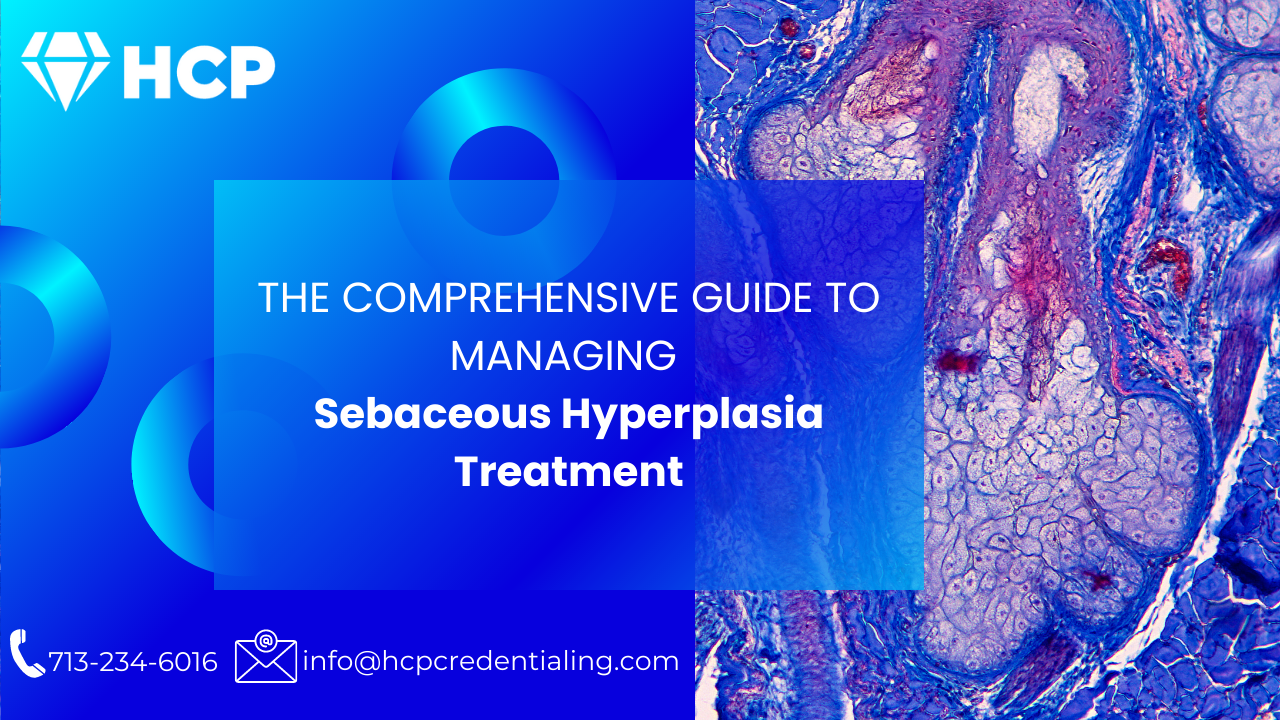Our skin, the largest organ in the body, acts as a protective barrier against harmful environments and weather changes. However, as we age, certain risks such as sebaceous hyperplasia can arise, necessitating appropriate treatment.
While there are numerous treatments available for sebaceous hyperplasia, their effectiveness can vary depending on individual skin types. Therefore, it is important to have a basic understanding of your skin, but self-medication is not advisable when it comes to skin-related issues. If you are considering any sebaceous hyperplasia treatment at home, it is better to first consult a skincare specialist for guidance and then follow the prescribed herbal or over-the-counter treatments.
Before delving into specific sebaceous hyperplasia treatments, let’s first understand what sebaceous hyperplasia is. Subsequently, we will provide a brief guide on treating this condition.
Sebaceous hyperplasia is a benign skin condition characterized by the sebaceous glands in the skin producing an excess amount of oil due to clogged hair follicles. This overgrowth of the glands appears as bumps on the skin, disrupting the quest for flawless, clear skin. That’s why people seek effective sebaceous hyperplasia treatments to get rid of these bumps.
The appearance of these bumps can occur anywhere on the body since the skin covers the entire body as a protective layer. However, the favorite areas for sebaceous hyperplasia bumps to appear are the facial regions, particularly the cheeks and forehead.
Sebaceous hyperplasia bumps typically range in size from 2 to 5 diameters and are usually bright off-white or yellow in color. If these patches persist for more than a week or two, resembling basal cell cancer, it is advisable to see a dermatologist for a reliable sebaceous hyperplasia treatment.
Now let’s explore some common treatments for sebaceous hyperplasia that can help achieve clear skin.
- Seek Professional Guidance: When you visit a dermatologist, they will conduct a thorough examination to determine if the bumps are indeed sebaceous hyperplasia or an allergic response. If they identify the bumps as sebaceous hyperplasia, there is usually no need for excision.
- Medications and Herbal Methods: Various medications, including over-the-counter treatments and herbal remedies, can be used for sebaceous hyperplasia. Your doctor can prescribe appropriate medications or recommend suitable herbal treatments for you.
- Laser Therapy: Although laser therapy offers immediate spot removal, it can potentially leave scars. Surgical procedures like laser therapy should be carefully considered and discussed with your dermatologist.
- Retinol Treatment: Retinol, a well-known anti-aging ingredient, can be beneficial for sebaceous hyperplasia treatment. Look for creams and serums that contain vitamin A or retinol as an active ingredient if you decide to pursue at-home treatments. Retinol helps prevent excess oil from clogging your pores.
- Topical Creams: If over-the-counter medications are not sufficient, topical creams prescribed by a dermatologist can be effective for sebaceous hyperplasia. These creams are highly concentrated and can significantly improve challenging skin conditions.
- Photodynamic Therapy (PDT): PDT, performed under the supervision of qualified doctors in a clinic or hospital, involves the application of a solution to your skin, followed by absorption time. This therapy typically takes about 2 hours, and the solution may need to be applied overnight to ensure effective coverage. Once absorbed, a specific light is used to eliminate hyperplasia or oil spots from your facial skin.
- Warm Compress: A warm compress can help release trapped oil in the bumps by expanding the pores. However, using this method at home may not be as effective as professional treatment.
- Cryotherapy: Freezing sebaceous hyperplasia can be a unique yet effective treatment. Following the procedure, you may experience some discoloration, but the oil spots will eventually dry out and fall off.
It is important to be aware that any treatment may have potential side effects. Understand the benefits and drawbacks of the treatment options you choose for your facial skin. Some risks associated with sebaceous hyperplasia treatments may include strong wound odor, slight pain in the affected areas, persistent oozing of pus, fever, edema, inflammation, redness, worsening of the condition, and scarring. Discuss any symptoms you experience with your doctor, and they will take appropriate steps to ensure a successful sebaceous hyperplasia treatment without causing harm to your skin.
Lastly, if sebaceous hyperplasia or any other skin condition does not affect you, there is no need to worry.



